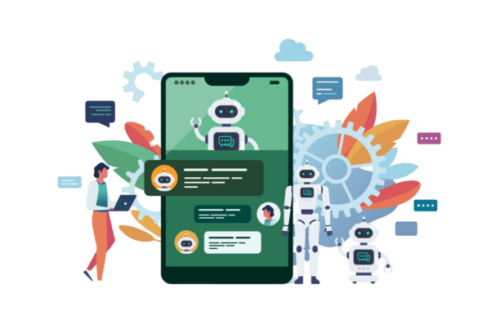
The recruitment process has become more complex and demanding than ever. Hence Applicant Tracking Systems (ATS) have become indispensable tools for HR professionals and recruiters alike. Over the years, these systems have evolved significantly, adapting to the changing landscape of talent acquisition. As technology continues to advance, ATS platforms are integrating innovative features to streamline hiring processes, enhance user experience, and leverage data-driven insights. This blog will explore the latest advancements in ATS technology, focusing on AI integration, mobile capabilities, and user experience enhancements.
A Brief History of Applicant Tracking Systems
To understand the evolution of ATS, it’s important to recognize their origins. The initial ATS solutions emerged in the 1990s as simple databases for managing resumes. Over time, these systems expanded in functionality, incorporating features such as job posting, candidate tracking, and basic reporting. However, it wasn’t until the rise of cloud computing and big data analytics in the 2000s that ATS began to truly transform.
Today, modern ATS solutions are much more sophisticated, offering a range of features designed to improve the recruitment process. The integration of AI, mobile technology, and enhanced user experiences are at the forefront of this evolution, shaping the future of talent acquisition.
AI Integration: Revolutionizing Recruitment
Artificial intelligence (AI) is perhaps the most significant advancement in ATS technology. By automating repetitive tasks and analyzing vast amounts of data, AI-driven ATS can significantly improve the efficiency and effectiveness of the recruitment process.
- Smart Resume Screening
One of the most time-consuming aspects of recruitment is resume screening. Traditional methods often involve manual review of hundreds or even thousands of applications, which can lead to bias and missed opportunities. AI-powered ATS systems can quickly scan and analyze resumes, using natural language processing (NLP) algorithms to identify keywords and qualifications relevant to the job description.
This automation not only speeds up the screening process but also enhances the quality of candidate selection. By removing human biases, AI can help ensure that the best candidates rise to the top, based solely on their qualifications and fit for the role.
- Predictive Analytics
AI-driven ATS platforms are also leveraging predictive analytics to forecast hiring outcomes. By analyzing historical data, these systems can identify patterns and trends, providing recruiters with insights into candidate behaviors, the effectiveness of recruitment strategies, and potential hiring risks.
For example, predictive analytics can help recruiters identify which sources yield the best candidates or forecast turnover rates based on historical employee performance. This data-driven approach allows organizations to make informed decisions, improving the overall efficiency of the recruitment process.
- Chatbots and Candidate Engagement
AI-powered chatbots are becoming increasingly common in ATS solutions. These virtual assistants can engage with candidates, answering frequently asked questions, providing updates on application status, and even scheduling interviews. This not only enhances the candidate experience but also frees up valuable time for recruiters.
By maintaining open lines of communication, chatbots can help keep candidates informed and engaged throughout the hiring process, reducing drop-off rates and improving overall satisfaction.

Mobile Capabilities: Recruiting on the Go
With the rise of mobile technology, candidates now expect to engage in recruitment processes from their smartphones. As a result, ATS providers are focusing on enhancing mobile capabilities to meet these demands.
- Mobile-Friendly Interfaces
Modern ATS platforms are designed with mobile responsiveness in mind. This means that candidates can easily browse job listings, submit applications, and receive updates—all from their mobile devices. A user-friendly mobile interface is crucial for attracting top talent, especially among younger generations who prioritize convenience.
- Mobile Applications for Recruiters
Just as candidates benefit from mobile-friendly interfaces, recruiters also need access to recruitment tools on the go. Many ATS solutions now offer mobile applications that allow recruiters to manage the hiring process from anywhere. This flexibility enables recruiters to review applications, communicate with candidates, and make hiring decisions on the fly, streamlining the recruitment process.
- Enhanced Candidate Experience
Mobile capabilities not only facilitate candidate applications but also enhance the overall candidate experience. Features such as mobile-friendly interview scheduling, notifications, and document uploads make the process seamless for candidates, increasing the likelihood of attracting high-quality applicants.
User Experience Enhancements: Simplifying the Process
As ATS technology evolves, user experience remains a key focus. A well-designed ATS can significantly improve the efficiency of the hiring process, making it easier for recruiters to find and engage with candidates.
- Intuitive Dashboards
Modern ATS solutions often feature intuitive dashboards that provide recruiters with a comprehensive overview of their hiring pipeline. These dashboards present essential metrics, such as time-to-fill, source of hire, and candidate status, in an easily digestible format. By simplifying data visualization, recruiters can quickly assess the health of their recruitment efforts and identify areas for improvement.
- Customizable Workflows
Every organization has unique recruitment processes, and a one-size-fits-all approach doesn’t always work. Leading ATS solutions now offer customizable workflows that allow recruiters to tailor the system to their specific needs. This flexibility ensures that organizations can streamline their hiring processes while adhering to their unique requirements.
- Seamless Integrations
The ability to integrate with other HR tools and platforms is essential for a comprehensive recruitment ecosystem. Many modern ATS solutions offer seamless integrations with popular HR software, job boards, and assessment tools. This interconnectedness allows recruiters to leverage the best tools for their needs, enhancing the overall efficiency of the recruitment process.
What’s Next for Applicant Tracking Systems?
As technology continues to evolve, so too will ATS solutions. The future of applicant tracking systems may come with enhanced mobile capabilities, and a continued focus on user experience.
- Greater AI Advancements
As AI technology continues to advance, we can expect even more sophisticated features within ATS platforms. This could include deeper integration of machine learning algorithms that continuously improve resume screening and predictive analytics capabilities based on real-time data.
- Enhanced Data Privacy and Security
With the increasing reliance on digital tools, data privacy and security will be paramount. Future ATS solutions will need to implement robust security measures to protect sensitive candidate information and comply with data protection regulations.
- Focus on Diversity and Inclusion
As organizations strive to create more inclusive workplaces, ATS solutions will likely incorporate features that promote diversity in hiring. This may include tools that help recruiters identify and mitigate unconscious bias in the hiring process, ensuring a more equitable approach to talent acquisition.
Wrapping Up
The evolution of Applicant Tracking Systems has been marked by significant advancements in technology, particularly in AI integration, mobile capabilities, and user experience enhancements. As these trends continue to shape the recruitment landscape, organizations that embrace modern ATS solutions will be better positioned to attract and retain top talent.
By leveraging the latest advancements in ATS technology, recruiters can streamline their hiring processes, improve candidate engagement, and ultimately drive better hiring outcomes. As we look to the future, it is clear that the role of ATS will continue to evolve, making them an indispensable part of the recruitment toolkit.
To receive and stay updated about related content:





